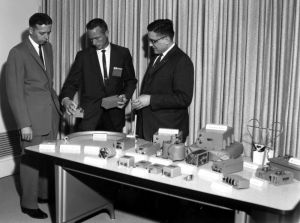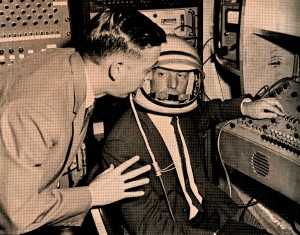 By means of a special circuit set up by Collins engineers, Astronaut Carpenter was able to talk through a Project Mercury capsule communication system. |
Carpenter, who is married and the father of four, was born at Boulder, Colo. His hobbies are skin diving, water skiing and archery, an activity which also has the interest of his 1O-year-old son. As a Navy Pilot he has clocked over 2800 hours of flying time, with over 300 in jets. His selection as an Astronaut came as a welcome surprise, and he considers it excellent duty. After meeting him, one goes away with the feeling he has just met the calmest man in the world. Physically he is less imposing, due probably to his height; but the 34-year-old, who weighs 160 and is 5' 10½", has an athletic air about him which gives the appearance of vitality and power. His medium brown hair is clipped short, and he has a direct way of looking, almost focusing, with his green eyes. In speaking for the Astronauts as a group, he said: “We all feel a little embarrassed by all the attention we are receiving. There have been many people working on the project for a much longer period of time, and their real contributions have been greater than ours by several degrees of magnitude. The project is important to me and to the whole group, and we are very impressed by the creative thinking and intelligence that is going into the project.” |
|
Discussing the objectives and results of the project, the Astronaut declared, “I feel it (the flight into space) will surpass what has been done before and will be a contribution without measure. A chief result of the space flight will be gammg knowledge about a tremendous unknown - the greatest unknown we have.” “While the first Astronaut to go will be the hero, the last one might easily contribute more to mankind than the one who goes first. Most scientists working on a research project know what the ultimate objective is. In the case of Project Mercury, we won't know exactly what we are after; however, we are convinced what we are starting on is exceedingly important, but not so easy to see.” What are his personal sentiments about Project Mercury? “Seeing the people who work on the project and seeing the equipment itself is reassuring … Most important is the faith coming from confidence in the project, a confidence brought about by the caliber of the people involved in the project.” Carpenter says the first attempt to put a man in space under the project will be during 1961. Orbital flight will be preceded by ballistic flight, which, according to various published reports, will occur later this year. |
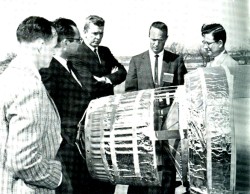 Project Mercury mockup used for antenna studies is examined by Astronaut Carpenter (second from right) and Collins engineering personnel on a test tower. |
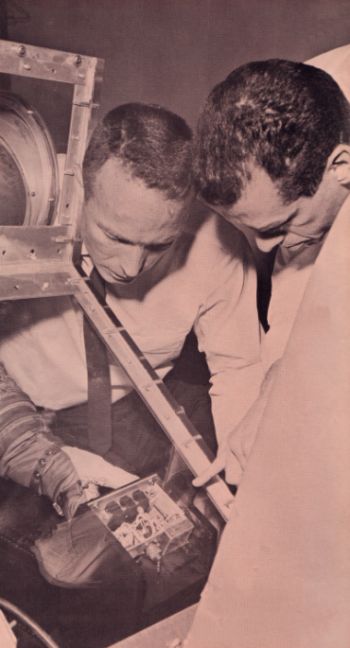 Communications controls for Project Mercury are tested by Astronaut M. Scott Carpenter (left). The controls are housed in a plexiglass chamber in a pressure suit simulator. |
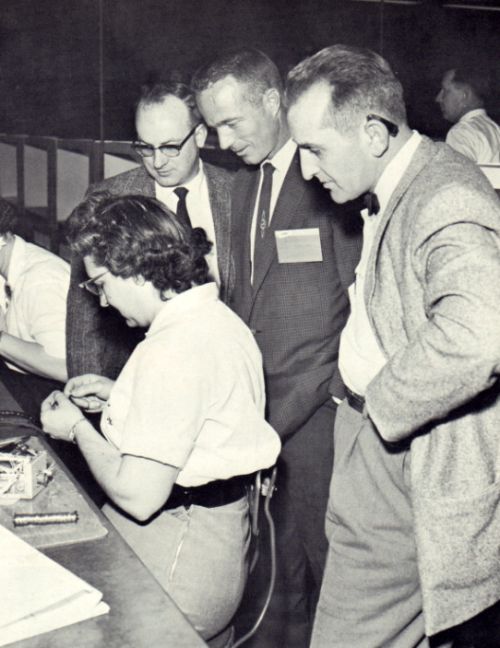 M. Scott Carpenter (center) during his visit to the CR Division of Collins, toured the production lines where workers are assembling components for capsule simulation. |
| —Collins Signal, Issue 39, Volume 8-3, 1960 - Pages 2-5 | |
